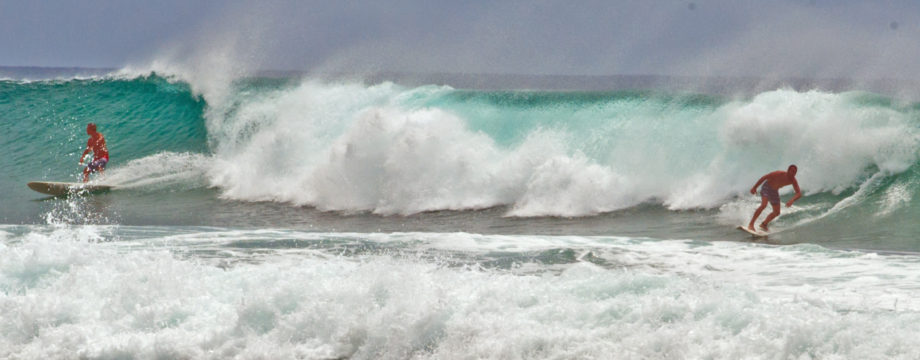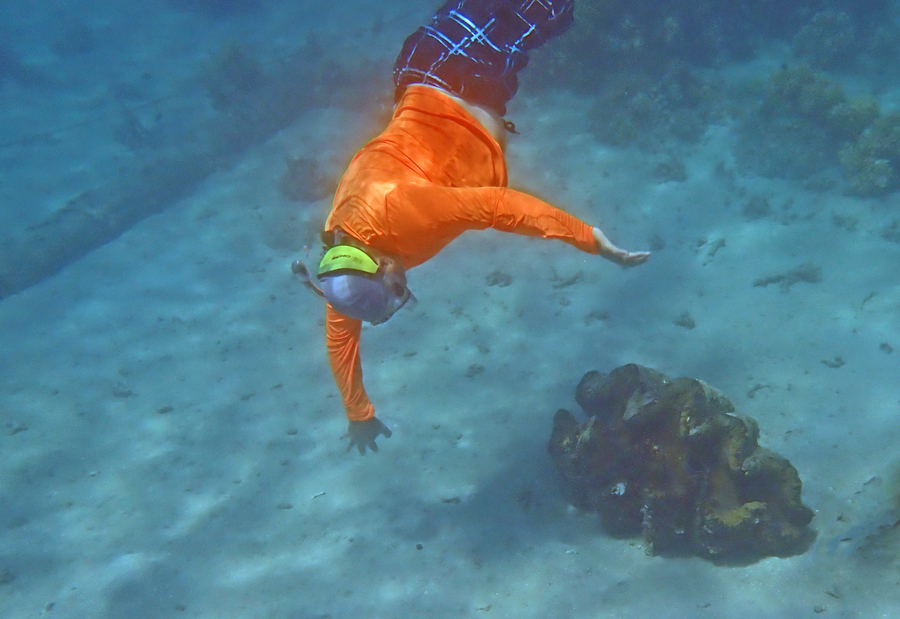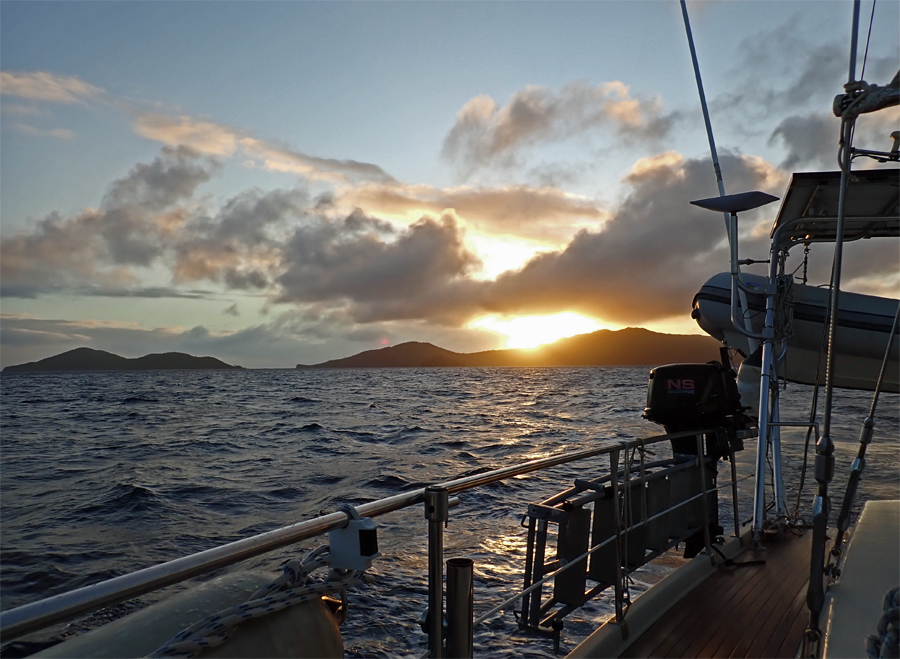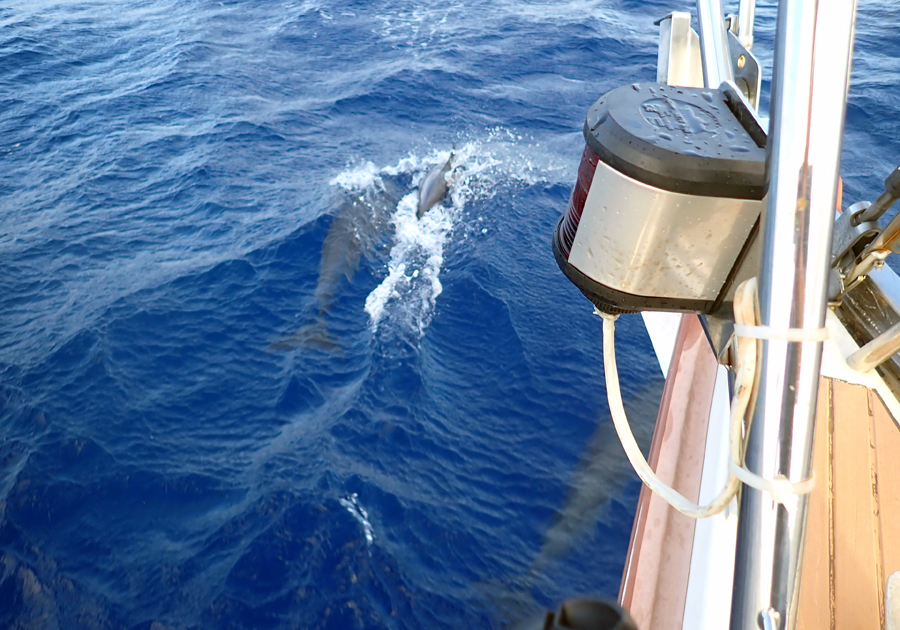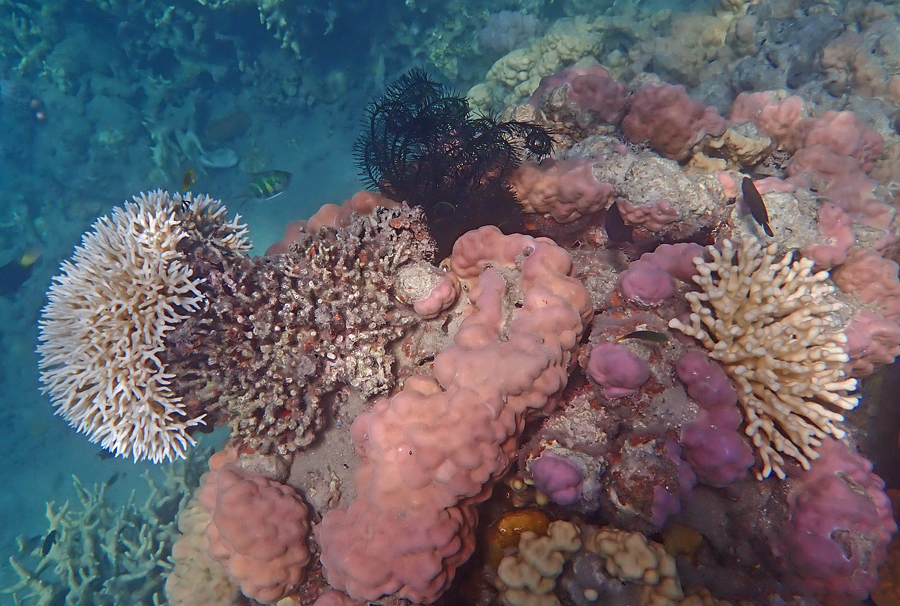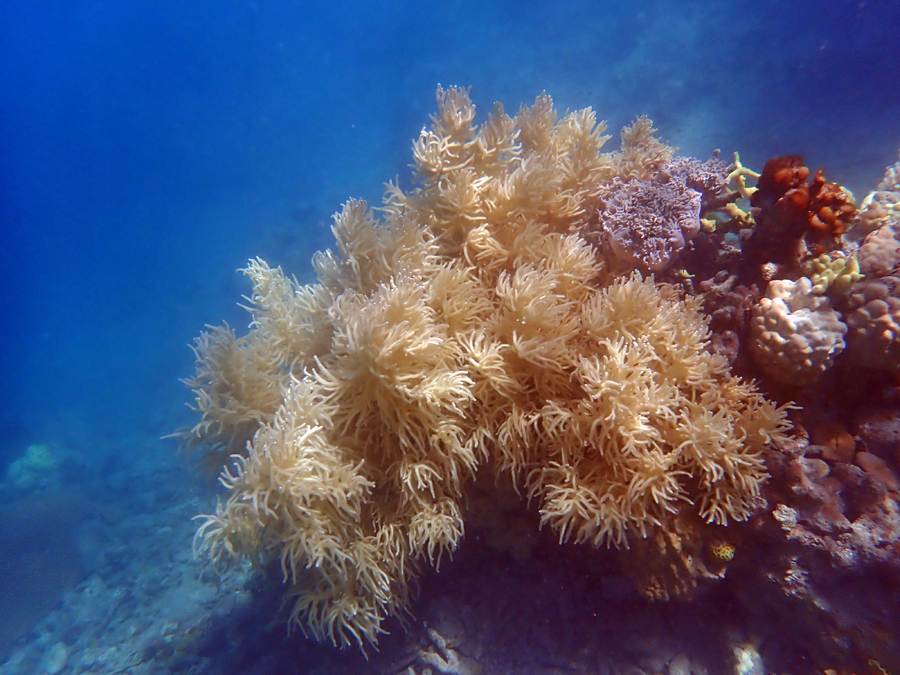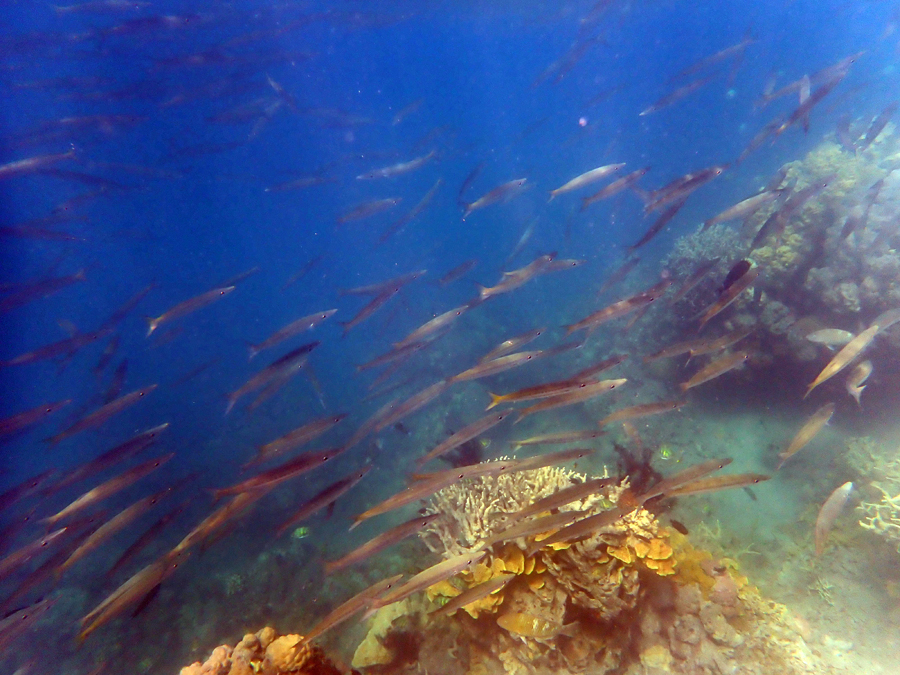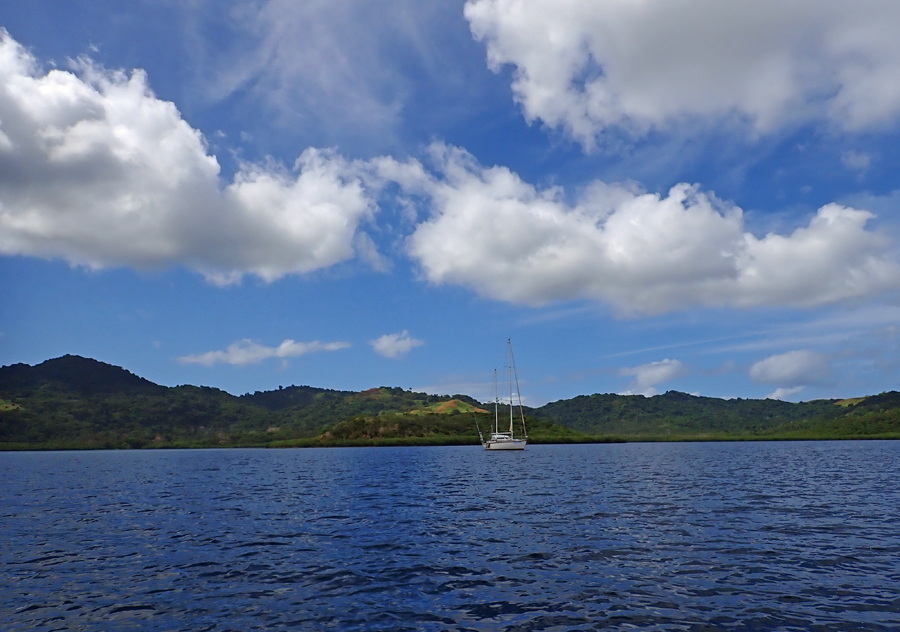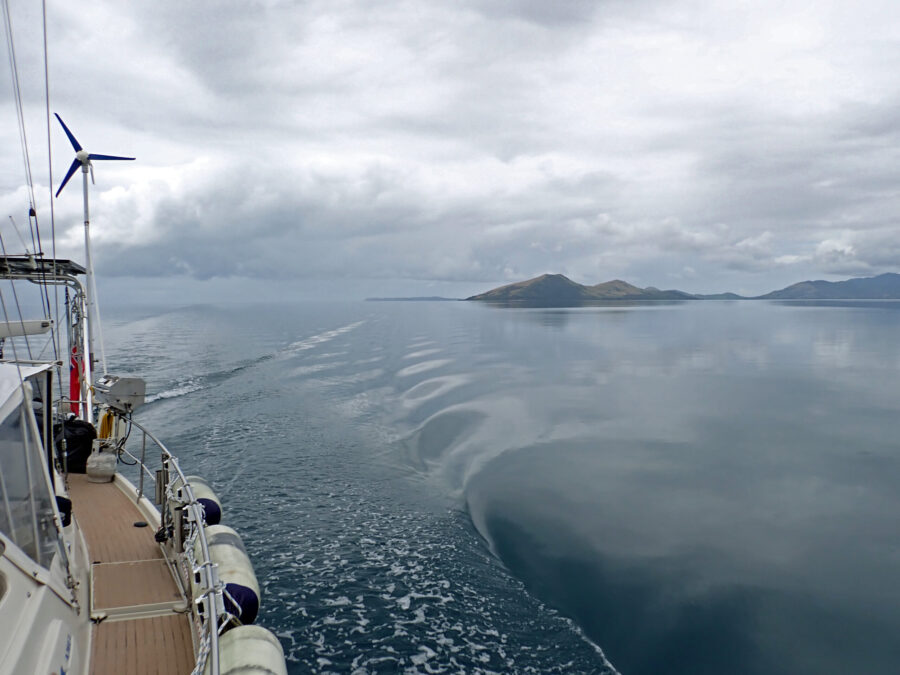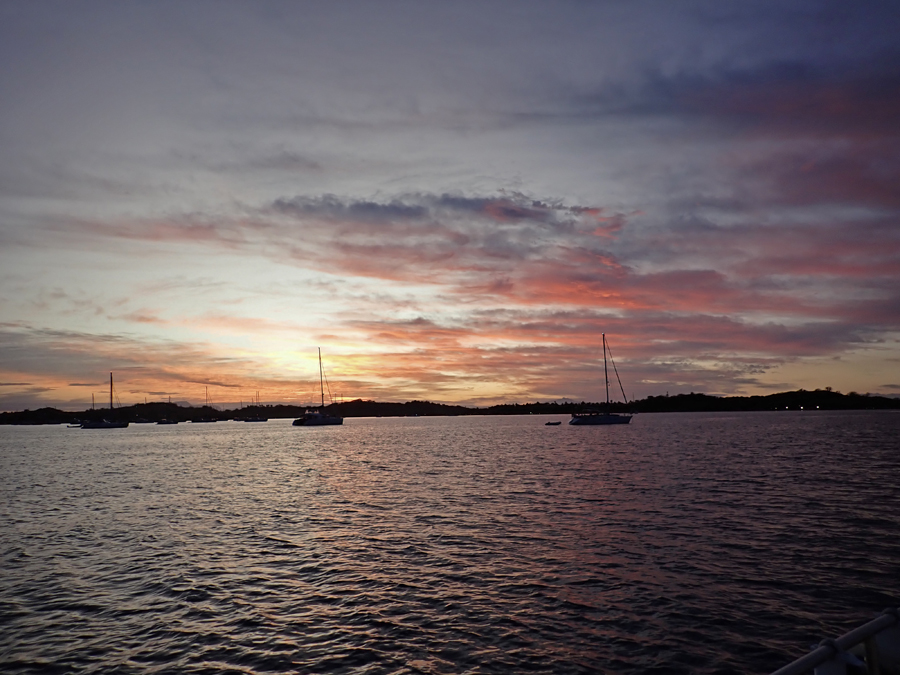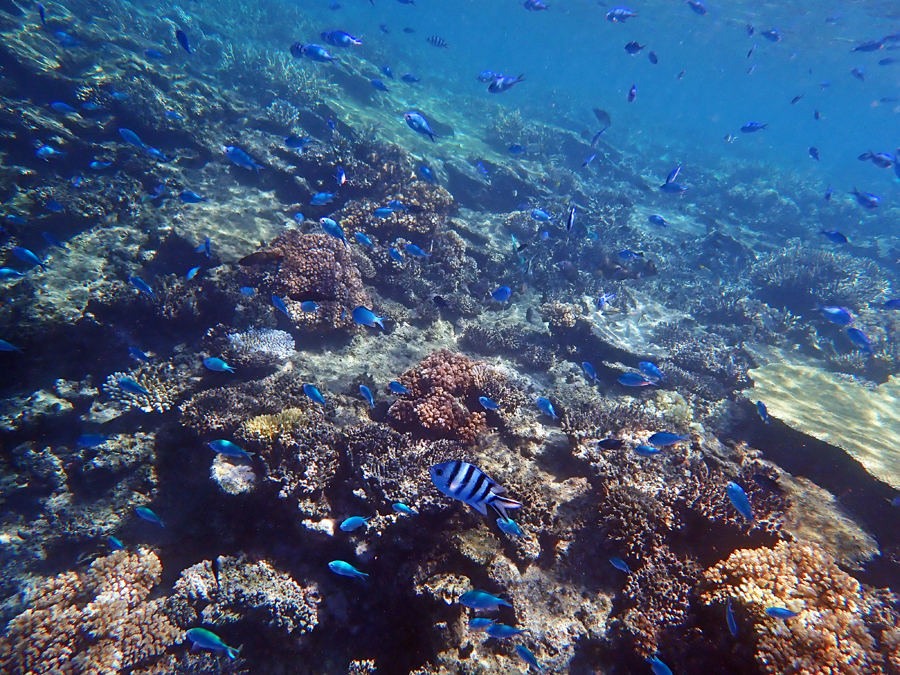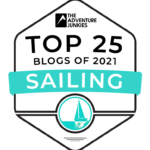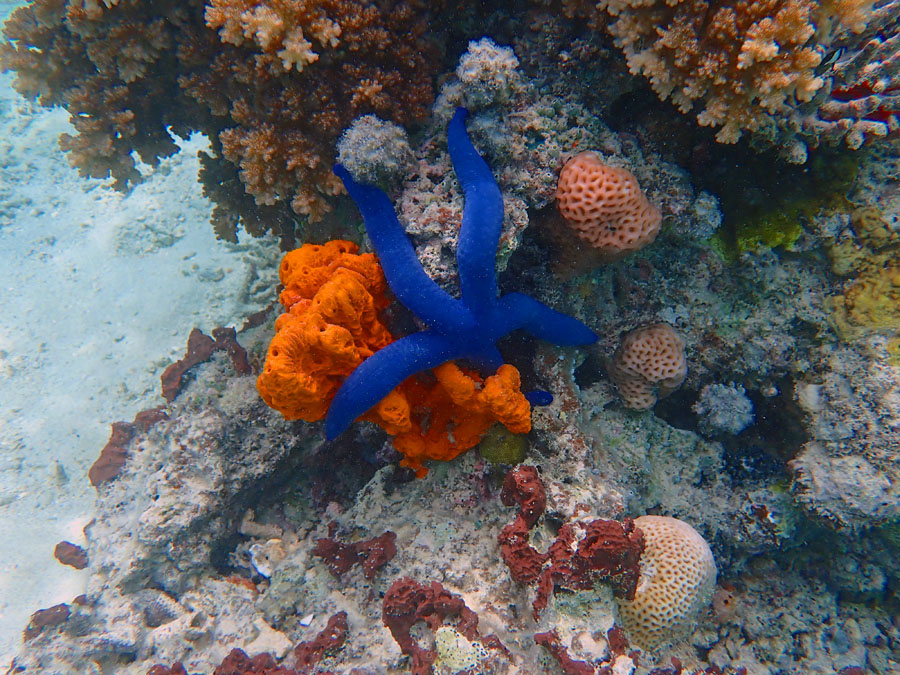
Sometimes we find color underwater where we least expect it. A blue starfish wrapped about orange coral.
I am happy to say we finally have Nawi Island in the rearview mirror. We wound up waiting for our part longer than expected. Fiji customs held up the windlass part for 9 days for no apparent reason. Cindy found a senior contact at DHL and asked them to investigate the delay. Fiji customs said they were waiting on paperwork from us. Frustrated beyond belief, Cindy explained to DHL she had sent the paperwork three times. She copied the local contact at DHL each time. They looked at the email trail and agreed Fiji customs had indeed received the paperwork.
Our sail out of Nawi was awesome. We departed at first light (05:30) heading for Makogai Island, a small sparsely populated island about 50 miles away. Winds were absolutely perfect and the ocean swells were from the same direction making for a great ride. We averaged about 7.5 knots with one reef in the sails. It’s been a long time since we had picture-perfect weather like this. Wow! I almost forgot how enjoyable sailing can be.
Makogai Island is a milk-run spot for most cruisers heading west through Fiji either coming from the Savusavu area or perhaps the Lau Islands. We weren’t surprised to find a few other boats in the anchorage on arrival. Most don’t stay very long. We stayed for two nights as the day after we arrived was my birthday.
Here’s how you spend a birthday when living on a boat. The day started with a full breakfast. Bacon, eggs, hashbrowns, fried tomatoes, and toast. After having let that settle, we launched the dinghy and took off toward a rocky peninsular to snorkel. Success. We found a ton of coral and plenty of fish. The current was a little stronger than we like so we kept a close eye on our distance from the dinghy to ensure we didn’t disappear over the horizon.
A friend of ours told us about giant clams in the area. So, our second site was where they directed us to find them. Sure enough, we found the giant clams. And, I mean giant clams. When they first told us, I thought they might mean the giant clams we’ve seen all over French Polynesia and Fiji. These are a little larger than my hand in most cases. But, now I have to refer to those as big clams since finding giant clams.
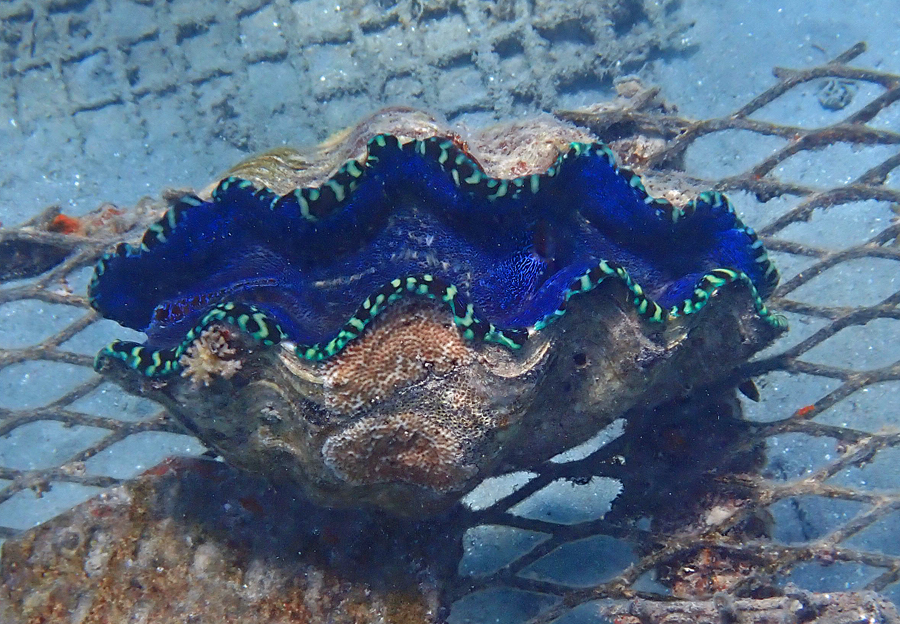
This giant clam is about a meter wide. Besides being very colorful, the blue part opens and closes and is in constant motion moving water through it. Whenever I get close enough to take a picture, it clams up (smile).

This coral rock is covered with Christmas Tree Worms. To me, they look like they have eyes and are staring at me.
When we anchored, we parked next to another Amel (the brand of our boat). It was a couple we met in Savusavu who we helped get thier propane tanks filled. When I awoke on my birthday looking outside, another Amel had sneaked in during the evening. We took time to go say hello. Of the eight boats in the anchorage, three are Amels. Amels have a well-earned reputation as a solid blue-water sailboat.
Once we arrived back aboard the Puffster, we re-stowed the dinghy and prepped for another early morning. Following all that work in the afternoon heat, we took quick showers. Spending a couple of hours in the water and then a nice shower gives a feeling of being squeaky clean. That evening, Cindy made me homemade lasagna, garlic bread, for dinner and lemon cake for dessert. We popped open a bottle of bubbly as well. Life is good.
An early rise the next day and a little bit hung-over, we departed for a long day heading to Nananu-I-Cake Island. As we exited the cut in the reef surrounding Makogai Island, we started to put up the sails. This was when we found ourselves surrounded by tons and tons of dolphins. At first, we are reluctant to grab the camera as it is stowed below. Our experience has been that when we do this the person getting it misses the dolphins as sometimes they don’t stay very long. But, this time was different.
The dolphins played with us for at least thirty minutes. In the clear waters of Fiji, we can watch their incredible speed as they swim about the boat. The feeling of sailing (no engine), having the wind in one’s hair, and watching a dolphin show out in the middle of the ocean is like nothing else. It reminds me why we do this lifestyle.
As if the dolphins weren’t enough, we are now the main attraction for some birds. As the boat moves, small fish come to the surface. I have no idea why. But, the birds love it. And for them, this is breakfast. While we are eating potato and egg tacos for our breakfast, we are stirring up the waters for them.
Our journey this day takes us into the very treacherous reef-ridden waters of North Viti Levu. Toward the end of the day, we are snaking through several reefs keeping a close eye on the charts and making sure we stay on the rhumb line. Needless to say, we are excited about all the reefs and can’t wait to put our faces in the water to check out the scene below us. The area is well known for being a top snorkel spot and doesn’t disappoint.
In Fiji, nautical charts can be inaccurate. Take a look at the screenshot of our plotter – below. As we entered this particular area the charts is off by a lot. We make the last-minute adjustment to our course by looking at the water color and in this case a couple of markers. The markers were not on the chart but we managed to spot them while nearing the reef.
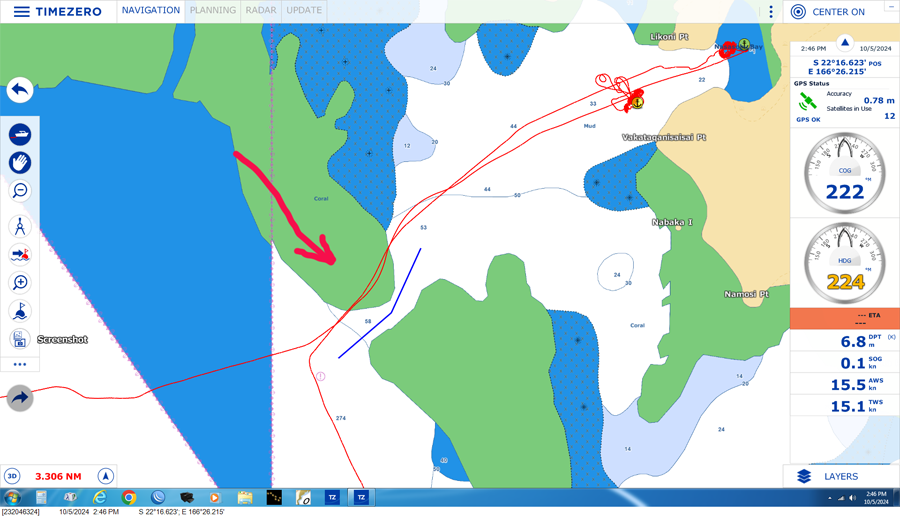
The red line is our track in and out of this bay. The blue line is the “safe” way according to the charts. It is off considerably. As you can see the chart shows us going over the reef (green area). Had we followed the chart, we would have hit the reef. Not a bay you’d want to enter at night using just charts.
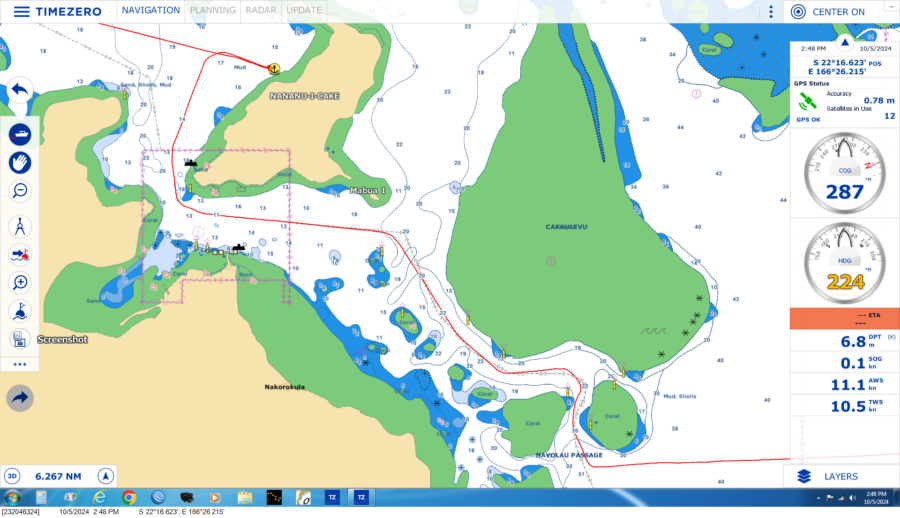
After seeing the previous screenshot, you can see why we might be a little bit nervous about this area. It was very tight but thankfully marked and charted accurately.

In ideal conditions, it is easy to see the reef. However, in rain or with the sun at the wrong angle, they can be impossible to spot. Do you see the one here?
Added to the fact that charts can be inaccurate, often times we see on the chart that a day-marker is supposed to be present marking a particular hazard or location. It seems that Fiji has little funds to maintain channel markers. They are often missing and can be unreliable.
Moving in waters like this needs to be done in daylight and ideally with the sun at our backs. This way we can see the change in water color indicating a shallow area. Then the question arises, how shallow is it? We never push that envelope. “Stay in the deep water” is our motto.
Anchoring off Nananu-I-Cake Island for a couple of days, we took our dinghy out to some of the reefs in the area. We found some really cool stuff. This area of Fiji is well known for soft and hard coral. We think that because the northern part of Viti Levu is so sparsely populated and also has very little agriculture, there is no run-off or pollutants to ruin the reefs that are close to Fiji’s main island.
The water was not as clear as we’d liked at Nananu-I-Cake Island but nonetheless wasn’t too bad. We’ve been spoiled by the water clarity in the Pacific islands.
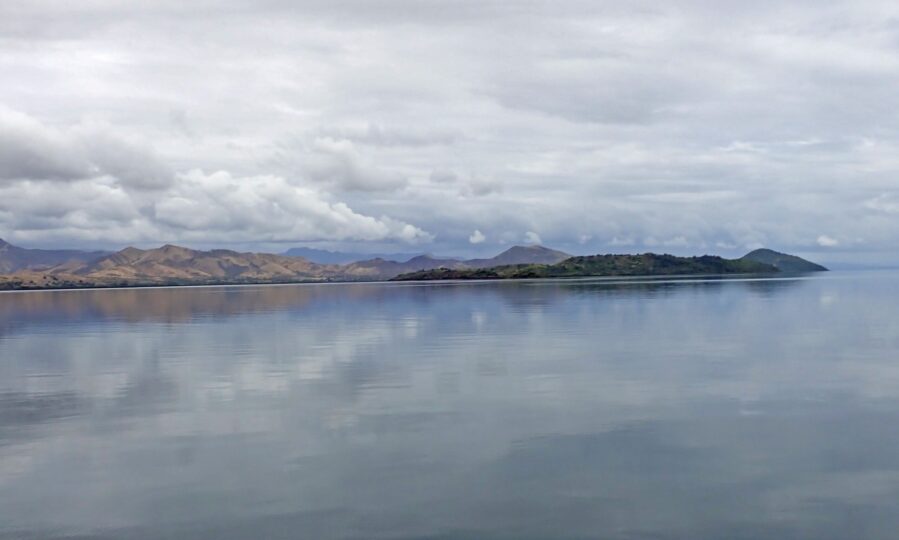
At this point, we’re thinking we might get wet. We did. It wasn’t too bad and passed before we reached the bay we planned to anchor for the night.
After slowly working our way westward along the north of Viti Levu, we decided to spend a couple of nights at Musket Cove on the island of Malolo. This is one of our favorite spots in Fiji. There is a snorkeling area there that is the best we’ve ever found.
Here is a funny tidbit. During one of the days when we were hanging out at Malolo, Cindy happened to look back on her calendar to see where we were a year ago. She often looks back to activate the reminiscing with the little grey cells. As it turned out, we were only 35 feet away from where we were the previous year. What are the chances?
From Malolo, it’s a quick hop to Denarau. Denarau is probably the nicest area of Fiji. It’s a bit of a tourist Mecca, but that’s okay with us. Our plan was to stay here for a couple of weeks taking in the awesome restaurants and activities. However, a good weather window has appeared and we are moving west. We’re both excited to head to a new country and new adventures.
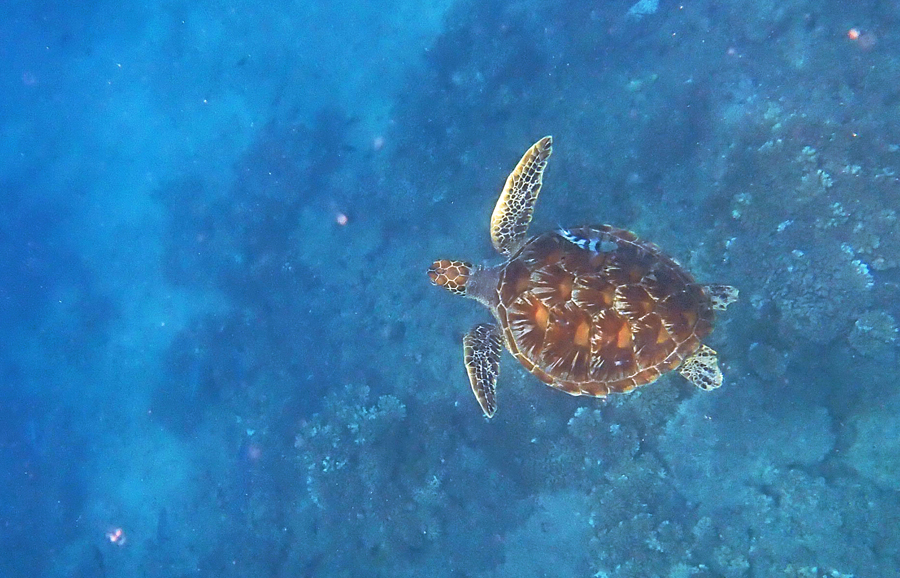
Every once in a while we see something extra special. This was one of those days when an endangered loggerhead turtle visited us while swimming at Musket Cove.
